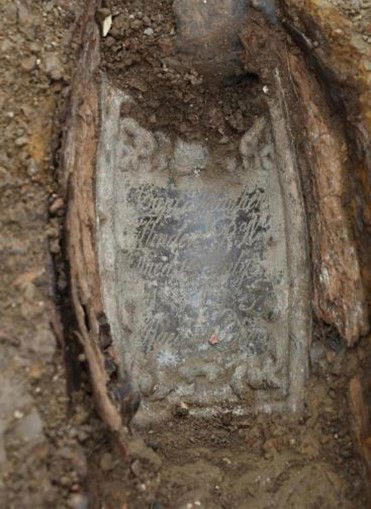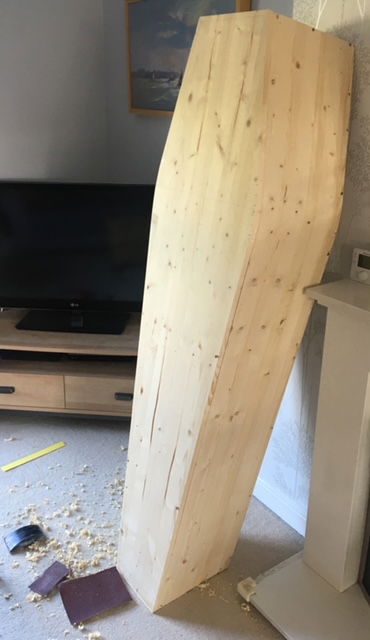What survived of Flinders’ coffin and how was it replicated?
The replica coffin was made to look just as the original would have done two centuries ago and was constructed with largely the same methods. The design was based on both the remains of Flinders’ coffin and better-preserved contemporary examples.
Preservation of coffins in archaeologically excavated churchyards, although sometimes varied, is usually poor. Although some decayed fragments of wood survived from Flinders’ coffin, it was mostly represented by dark brown organic staining, and its original form discernible through little more than rusted iron studs and nails.

Flinders’ coffin, like so many at St James’s, was also greatly distorted by the collapse of its wood. This being a direct result of rot and decay slowly compromising its ability to resist the pressures of the overlaying and surrounding soil.
Well-preserved coffins, as seen at Euston and other London sites, show a general conformity in carpentry techniques and proportions. English coffins of the 18th and 19th centuries were almost exclusively of the flat-lidded shouldered form.
Flinders’ coffin was no exception. This form, very recognisable to modern eyes as a ‘coffin-shape’, first emerged in the last quarter of the 16th century but was ubiquitous by the early 18th century.

My replica, just like the original, has been constructed with six pieces of wood – two sides, two ends, a base, and a lid.[1] However, this design was not entirely straightforward. The shoulders of a Georgian coffin were typically rounded, rather than formed with a sharp butt joint. It also tapered in both width and height and the foot end was sloped.
[1] Although various woods were used, including conifer and oak, most of the coffins in the post-medieval period were made of elm because it is less prone to splitting and offers water-resistance.